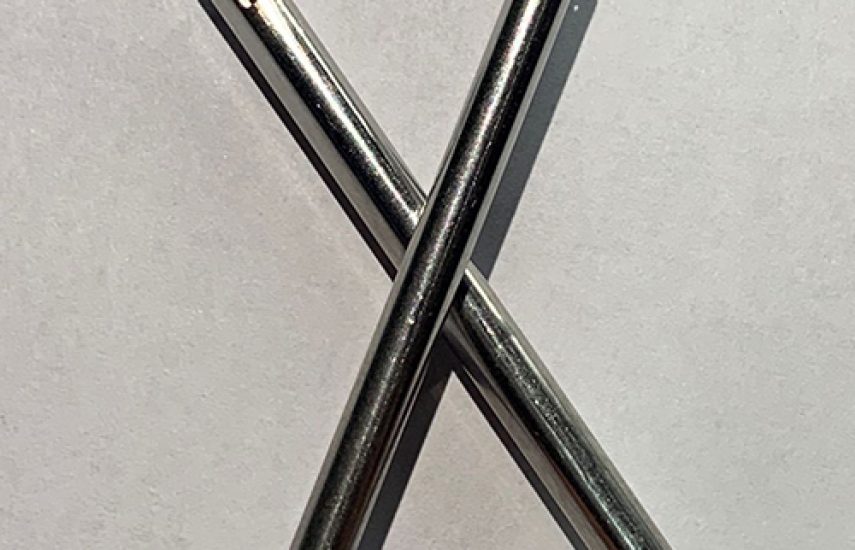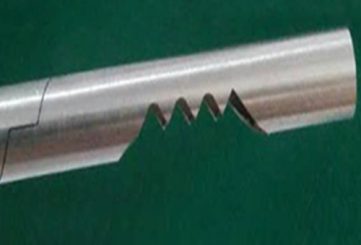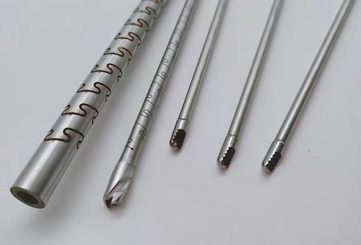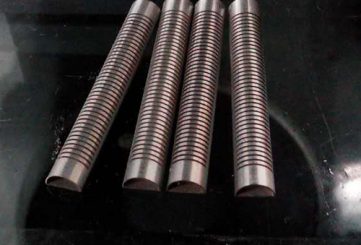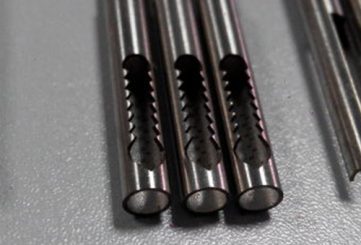Four-axis Linkage Cutting and Forming of Oval Tube
Four-axis Linkage Cutting and Forming of Oval Tube – Precision Shaping for Medical and Surgical Components
Four-axis Linkage Cutting and Forming of Oval Tube is a high-precision manufacturing process for creating oval-shaped tubes used in medical devices such as endoscopes and catheters. Utilizing advanced four-axis laser micromachining on medical-grade materials like SUS304 stainless steel, Nitinol, or Cobalt-Chrome alloys, this process delivers complex geometries with smooth, burr-free surfaces. It ensures exceptional durability, biocompatibility, and seamless integration into medical systems for minimally invasive procedures, meeting stringent quality standards.
Key Features:
- Ultra-High Precision: Achieves cutting seam widths of 15–30μm and accuracy of ≤±10μm for burr-free, precise oval tube structures.
- Complex Geometries: Four-axis linkage enables intricate oval tube designs tailored to specific medical applications.
- Biocompatibility: Hypoallergenic materials minimize tissue reaction, ideal for direct contact in sensitive procedures.
- Superior Durability: Offers high tensile strength and corrosion resistance for reliable performance in physiological environments.
- Efficient Integration: Compatible with various clamping systems and cutting methods for rapid assembly.
- Sterility Maintenance: Smooth finish reduces contamination risks and supports sterilization processes.
Certification and Standards:
Four-axis Linkage Cutting and Forming of Oval Tube complies with ISO 13485 quality management standards for medical devices and adheres to biocompatibility requirements under ISO 10993.
316L Stainless Steel:
316L Stainless Steel is a medical-grade austenitic chromium-nickel alloy renowned for its excellent corrosion resistance and biocompatibility. With a tensile strength of approximately 485–550 MPa and elongation up to 40%, it offers durability and flexibility without brittleness. Its low carbon content enhances weldability and resistance to intergranular corrosion, making it ideal for medical implants and instruments. Laser-machined for smooth, burr-free surfaces, it minimizes tissue irritation in sensitive applications.
Nickel-Titanium alloy:
Nitinol (NiTi), a nickel-titanium alloy, is renowned for its superelasticity and shape memory, making it a game-changer in medical applications. With a tensile strength of up to 1200 MPa and elastic modulus of 40–75 GPa, nitinol excels in demanding environments.
Titanium alloys:
Titanium Alloys are medical-grade materials prized for their high strength-to-weight ratio, excellent corrosion resistance, and superior biocompatibility. With tensile strength ranging from 900–1200 MPa and good ductility, they provide durability and flexibility for demanding medical applications. Their bio-inert properties make them ideal for implants and instruments requiring direct tissue contact. Laser-machined surfaces ensure smooth, burr-free finishes, minimizing tissue irritation in sensitive procedures.
Cobalt-chrome alloy:
Cobalt-chrome (CoCr), an alloy of cobalt and chromium often enhanced with molybdenum, is prized for its exceptional strength, corrosion resistance, and biocompatibility. With tensile strength ranging from 800–1500 MPa and hardness of 300–550 HV, CoCr is a cornerstone in medical technology. Popular grades like L605 (Co-Cr-W-Ni) and MP35N (Co-Cr-Ni-Mo) elevate its performance.
Aluminum alloy:
Aluminum Alloys are lightweight, medical-grade materials valued for their excellent corrosion resistance and high strength-to-weight ratio. With tensile strength typically ranging from 200–600 MPa and good ductility, they offer durability for medical and industrial applications. Their biocompatibility supports use in non-implantable devices and components. Laser-machined for smooth, burr-free surfaces, they minimize contamination risks and ensure compatibility with sterilization processes.
- Medical Endoscopy: Facilitates precise tube forming for flexible endoscopic systems in gastrointestinal, biliary, or urological procedures.
- Minimally Invasive Surgery: Supports oval tube structures for enhanced maneuverability in catheter and guidewire systems.
- Endoscope Assembly: Integral to constructing variable endoscopic components with high-precision requirements.
- Medical Device Repair: Employed in maintenance or replacement of tube components in endoscopic and catheter systems.
- Specialized Medical Designs: Adaptable for investigational or custom devices needing advanced flexibility in cardiology or neurology.
- Material Composition: SUS304 stainless steel, Nitinol (NiTi), or Cobalt-Chrome (CoCr) alloys.
- Dimensions: Customizable diameter, length, and oval tube geometries based on application requirements.
- Cutting Seam Width: 15–30μm.
- Machining Accuracy: ≤±10μm.
- Manufacturing Process: Four-axis linkage laser micromachining with continuous automatic feeding for burr-free, smooth finish.
- Clamping Compatibility: D-type collets, ER-series collets, three-jaw chucks.
- Cutting Methods: Dry or wet cutting options.
- Packaging: Sterilized and individually packaged to maintain integrity.
- Storage Conditions: Store in a dry, cool environment to prevent corrosion.

